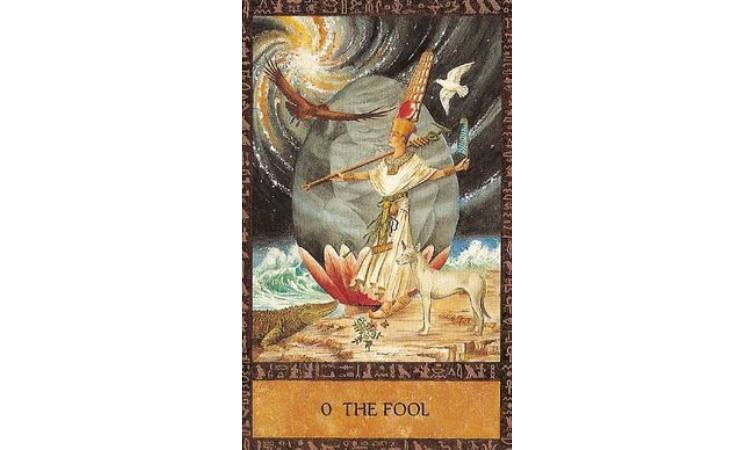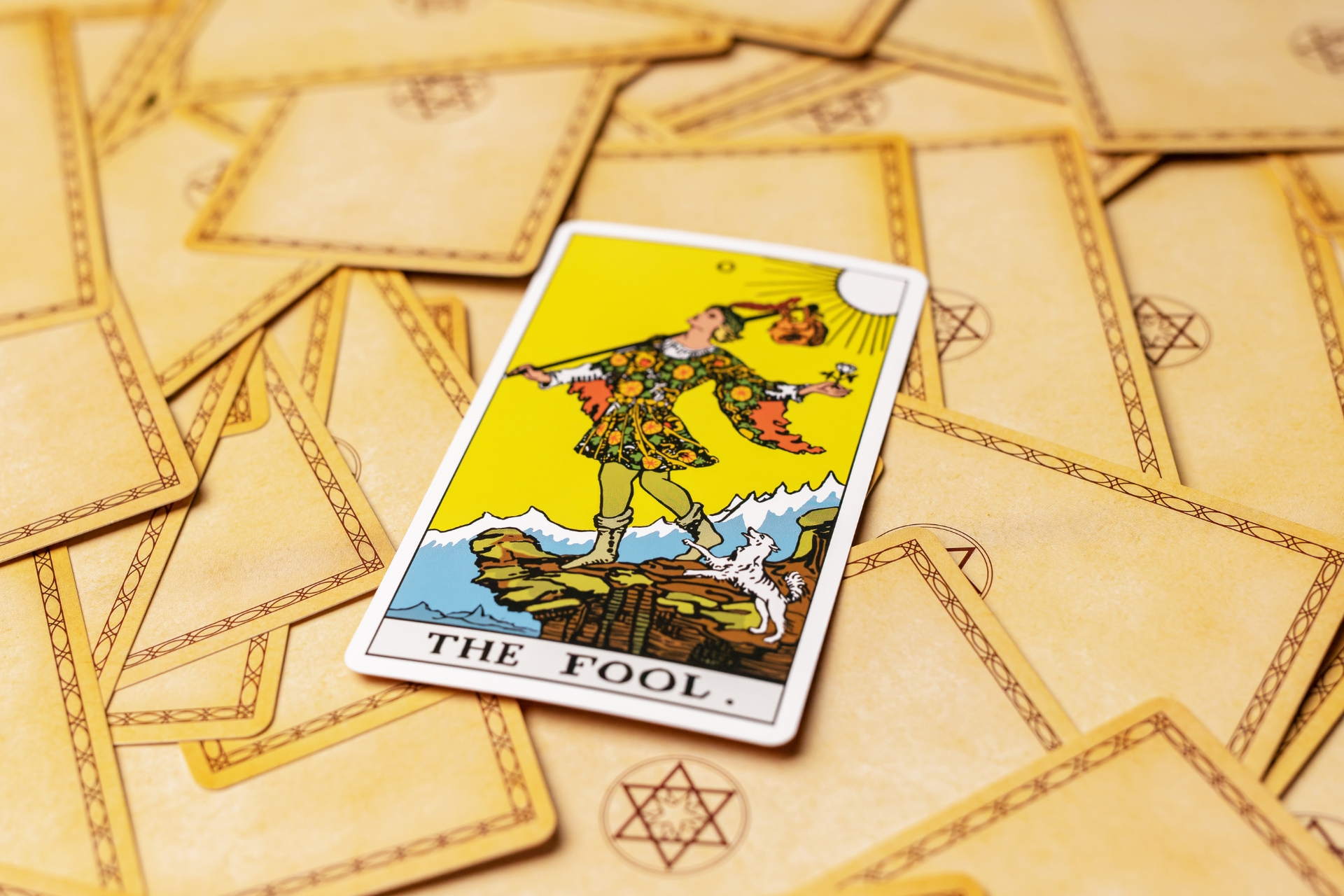About the Tarot
Much of tarot’s origins are as elusive as the immeasurable variety of decks themselves. We know very little about the certainty of tarot’s origins but it is commonly accepted that the first tarot deck, as we understand it today, was created by an Italian artist by the name of Bonifacio Bembo.
In her novel, 78 Degrees of Wisdom, Rachel Pollack writes that in the middle of the fifteenth century, Bembo painted a set of unnamed and unnumbered playing cards for the Visconti family in Milan based on the Italian game, ‘Tarocchi.’ These cards are believed to represent social and spiritual themes that reflect the time in which they were created. Bembo’s cards are also said to possess innate esoteric significance.
Because Bembo’s cards are so closely entangled with mystical imagery, many have assumed that tarot has even earlier origins.
With its inextricable links to Kabbalah and Jewish mysticism, some occultists have claimed that modern-day tarot derived from a conference of Kabbalists during the 1300s, however, there has been no factual historical evidence to support these claims.
In Kabbalistic Tarot, author Dovid Krafchow posits that the connection between the 22 Major Arcana cards and the length of the Hebrew alphabet (22 letters) illustrates a clear relationship between Kabbalah and the origin of tarot. Krafchow also suggests that each of the 78 cards represent a corresponding point on the Kabbalah ‘Tree of Life.’
Alternatively, there are theories dating them back to the ancient Egyptians.
Given its mysterious origins, tarot fascinates many of those who engage and practice with it. Interpretations for the cards have been shared, discussed, and contemplated for centuries.
The images, symbols, and archetypal stories associated with the cards are generally used to represent the soul’s journey and events through life in a number of ways.
A popular association is between ‘the Hero’s Journey,’ as detailed by Joseph Campbell’s famous work, The Hero with A Thousand Faces, and the 22 Major Arcana cards of the Tarot, these cards regarded as the major principles and experiences of life’s journey.

The Fools’ Journey
The Fools’ Journey, intricately woven through the tapestry of the Tarot, offers a profound reflection of the human soul’s evolution. As we traverse the archetypal landscapes depicted in the cards, we embark on a transformative odyssey of self-discovery and enlightenment. Each card in the Tarot deck contributes a piece to this intricate puzzle, weaving a tapestry of experiences, challenges, and growth.
At the heart of the Tarot lies the protagonist of the Fools’ Journey: the Fool himself. Represented as a carefree wanderer embarking on a journey of self-discovery, the Fool symbolises the innocence, spontaneity, and boundless potential inherent within every human soul.
As the Fool sets foot on his path, he encounters a series of archetypal experiences reflected in the 22 cards of the Major Arcana.
1. The Fool (0): The Journey Begins
The Fool, depicted as a youthful figure on the brink of a precipice, represents the initial stages of the soul’s quest for enlightenment. With a sense of optimism and naivety, the Fool steps into the unknown, unburdened by fear or inhibition.
2. The Magician (I): Harnessing Power
As the Fool ventures forth, he encounters the Magician, a master of manifestation and transformation. Through the Magician’s guidance, the Fool learns to harness his innate talents and resources, realising his ability to shape his own reality.
3. The High Priestess (II): Intuition and Wisdom
In his journey, the Fool encounters the enigmatic High Priestess, a symbol of intuition, inner wisdom, and the subconscious mind. She invites him to delve deeper into the mysteries of his psyche, urging him to trust his instincts and explore the realms beyond the tangible.
4. The Empress (III): Nurturing Creativity
Next, the Fool encounters the nurturing embrace of the Empress, embodying fertility, abundance, and creative expression. Under her guidance, he learns to cultivate his creativity and connect with the nurturing energies of the universe.
5. The Emperor (IV): Establishing Structure
As the Fool continues his odyssey, he encounters the authoritative presence of the Emperor, representing order, stability, and worldly power. Through the Emperor’s influence, he learns the importance of establishing structure and taking responsibility for his actions.
6. The Hierophant (V): Seeking Spiritual Guidance
In his quest for meaning, the Fool seeks counsel from the Hierophant, a spiritual teacher and guardian of tradition. Under the Hierophant’s guidance, he explores the depths of religious and philosophical wisdom, seeking to uncover the truths that resonate with his soul.
7. The Lovers (VI): Union and Choice
Amidst his journey, the Fool encounters the profound experience of love and partnership embodied by the Lovers. Here, he faces the dualities of choice and commitment, navigating the complexities of relationships and the harmonisation of opposing forces.
8. The Chariot (VII): Triumph over Challenges
As the Fool confronts obstacles on his path, he calls upon the strength and determination symbolised by the Chariot. With unwavering focus and willpower, he surges forward, triumphing over adversity and conquering his fears.
9. Strength (VIII): Embracing Inner Power
In his journey of self-discovery, the Fool learns the true meaning of strength as he encounters the gentle yet formidable presence of the Strength card. Here, he discovers that true power lies not in force but in compassion, resilience, and the ability to tame the wild within.
10. The Hermit (IX): Seeking Solitude and Reflection
Amidst the hustle and bustle of his journey, the Fool retreats into solitude, seeking the wisdom of the Hermit. In the quietude of introspection, he finds clarity, guidance, and a deeper understanding of his purpose.
11. Wheel of Fortune (X): Embracing Change
As the Fool navigates the ebbs and flows of life, he encounters the ever-turning Wheel of Fortune. Here, he learns to embrace the inevitability of change, recognising the cyclic nature of existence and the opportunities for growth that lie within every twist of fate.
12. Justice (XI): Balancing Karma
In his quest for enlightenment, the Fool encounters the impartial gaze of Justice, symbolising fairness, accountability, and karmic balance. Here, he learns the importance of integrity and ethical conduct, understanding that every action carries consequences.
13. The Hanged Man (XII): Surrender and Sacrifice
Amidst the trials of his journey, the Fool experiences the profound surrender depicted by the Hanged Man. Here, he relinquishes control, embracing the transformative power of sacrifice and surrendering to the greater wisdom of the universe.
14. Death (XIII): Embracing Endings and New Beginnings
As the Fool confronts the inevitability of change, he encounters the transformative energy of Death. Here, he learns to release the old and embrace the new, understanding that endings are but the precursors to new beginnings.
15. Temperance (XIV): Finding Balance and Harmony
In his quest for equilibrium, the Fool encounters the serene presence of Temperance. Here, he learns to blend opposing forces, finding harmony and balance amidst the chaos of life’s complexities.
16. The Devil (XV): Confronting Shadow Self
As the Fool delves deeper into his psyche, he confronts the dark and primal aspects of his being embodied by the Devil. Here, he faces his deepest fears, desires, and attachments, transcending the illusions that bind him and reclaiming his power.
17. The Tower (XVI): Embracing Destruction and Revelation
Amidst the upheaval of his journey, the Fool confronts the cataclysmic forces of the Tower. Here, he experiences the shattering of illusions and the revelation of truth, paving the way for profound transformation and rebirth.
18. The Star (XVII): Renewed Hope and Inspiration
In the aftermath of destruction, the Fool finds solace and renewal in the gentle radiance of the Star. Here, he discovers a renewed sense of hope, inspiration, and spiritual guidance, guiding him towards his true purpose.
19. The Moon (XVIII): Navigating Uncertainty and Illusion
Amidst the darkness of the night, the Fool is guided by the mystical light of the Moon. Here, he confronts his deepest fears and illusions, navigating the realms of the subconscious with courage and clarity.
20. The Sun (XIX): Radiant Illumination and Joy
As the dawn breaks on his journey, the Fool basks in the radiant warmth of the Sun. Here, he experiences the fullness of joy, vitality, and enlightenment, embracing the beauty and abundance of life with open arms.
21. Judgment (XX): Embracing Redemption and Liberation
In the final stages of his journey, the Fool faces the profound reckoning depicted by Judgment. Here, he confronts his past actions, embraces forgiveness and redemption, and prepares for the ultimate liberation of his soul.
22. The World (XXI): Wholeness and Integration
As the Fool reaches the culmination of his journey, he encounters the transcendent unity symbolised by the World. Here, he achieves a state of wholeness, integration, and enlightenment, embodying the full spectrum of human experience and divine wisdom.
Through the trials and triumphs of the Fool, we are reminded of our own capacity for resilience, wisdom, and transcendence. In embracing the lessons of the Tarot, we unlock the doorways to our deepest truths and awaken to the boundless potential that resides within us all.



